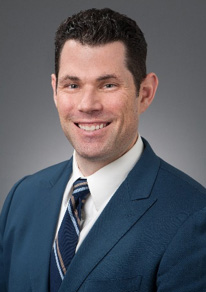By DARTH VAUGHN AND CASEY FLAHERTY
Anyone can take classes at Harvard. Few people get into Harvard. But HarvardX, the school’s iteration of Massive Open Online Courses, is open to everyone.
There are similar offerings from MIT, Yale, Stanford, Princeton, Cornell, et al. The internet has taken the democratization of knowledge to unprecedented heights. And our selective institutions of higher education should be commended for their contribution to the global learning community.
Most people still don’t learn.
Like libraries, MOOCs are open to all but only used by some. In raw numbers, MOOC attendance is impressive. In 2015, 35 million enrolled. But that number should be put in context of the total eligible population. That is, 5 billion literate earth dwellers above the age of 14. Moreover, enrollment is not the same thing as completion. MOOC completion rates are 5 percent. So about 2 million people out of that population (0.04 percent) completed a MOOC last year. The foregoing numbers are ripe for quibbling. But the basic point—relatively few people take advantage of the learning opportunities available to them—would be hard to argue. Some people are lazy. Most people are just busy.

Darth Vaughn.
Availability does not guarantee learning. We regularly confuse the two. As individuals and law firms, we often acquire training material or technology that we fail to put to good use because we don’t make the complementary investment in time. We treat purchase as the definitive action when it is really just a first step.
That availability is a necessary but not sufficient condition for driving learning outcomes (i.e., changing behavior) has important implications for those of us who advocate for lawyers to acquire skills they do not currently possess.
The authors have recently focused on lawyers gaining proficiency with the technology already at their disposal (which doesn’t come easy, even for the mythical “digital natives”). Similar to MOOCs, there is a large cache of free online training that covers the important aspects of common office technology. Most lawyers would benefit immensely from it. Few lawyers do.
But the fundamental challenge of getting busy lawyers to set aside time to learn something new applies equally to whatever topic or skill you believe is garnering insufficient attention—emotional intelligence, cybersecurity, numeracy, mindfulness, data fluency, practice management, visual storytelling.
Time is a prerequisite. Time is scarce. But the claim that “I don’t have time” is imprecise. We all have an equal amount of time. We make different choices about how to allocate our time. We often have compelling reasons for our choices (e.g., a client or court deadline). But these are choices nonetheless.
When we say that we lack time, what we are really saying is “this is not a priority.”
How do you change priorities? Well, you can, and should, try reasoned argument. Explain the benefits. Identify the costs and risks of not learning. Appeal to self-interest. Try to make learning fun. But you are likely to encounter obstacles. First, you need lawyers to set aside time to engage with your argument that they should set aside time to engage more on a topic where they are currently ignorant. Second, you need to convince them to voluntarily exit their comfort zone.
Lawyers resemble the rest of humanity in that we don’t know what we don’t know. The less we know about a topic, the more likely we are to labor under delusions of adequacy. This problem of metacognition—ignorance of our own ignorance—is not just about false confidence in what we already know (though it is about that too) but also about our conception about how much we have left to learn and how important learning is. As the island of knowledge expands, so do the shores of recognizable ignorance. But this creates a chicken-and-egg conundrum. We don’t understand that we really should be devoting some of our finite attention to a topic until we are already devoting some attention to the topic. In short, we are predisposed to dismiss arguments that we need to learn more about a topic that we know little about.
And lawyers seem custom-built to resist efforts at persuading us to address blind spots, which, of course, starts with us admitting we have blind spots that matter. Lawyers, like all people, engage in motivated reasoning. In particular, as high-status experts, we can find it unsettling to exit our comfort zone.

Casey Flaherty.
So we unleash our refined issue-spotting skills on the suggestion we do so. We cite precedent to support our current, comfortable course of action—always done it this way, been successful. We distinguish uncomfortable precedent—e.g., other people who have benefited from this change in behavior—as inapplicable to us because, well, reasons. And we return to the comfort of our existing patterns of behavior. Unfortunately, as IBM’s Ginni Rometty is fond of saying, “growth and comfort do not coexist.”
Eventually, most advocates of change/growth in the legal profession start to look to mechanisms of benevolent coercion. It is not that they stop interpersonal evangelizing. But they focus their efforts on those people with access to levers of actual power.
Clients should force law firms to….
Law firms should mandate…
Law schools should teach…
Bar associations should require…
But these institutions have their own inertia to overcome. Which is why it is so fascinating when one of them breaks the mold. More on our friends in Florida in some subsequent columns.
Darth Vaughn is a partner and director of legal process services at Haight Brown & Bonesteel. Casey Flaherty is of counsel and director of client value at Haight Brown & Bonesteel. Darth and Casey are both principals in the legal operations consultancy Procertas and authors of the Legal Technology Assessment.